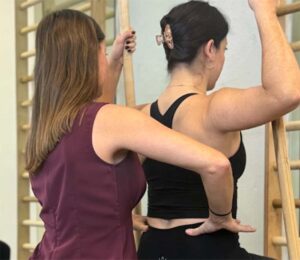Integrated Physical Therapy

Introduction to Integrated Physical Therapy
Integrated Physical Therapy (IPT) combines various therapeutic disciplines to create a comprehensive treatment plan tailored to an individual’s specific needs. This holistic approach addresses the physical, emotional, and psychological aspects of recovery, ensuring a well-rounded path to healing and wellness.
The Importance of Integrated Physical Therapy
IPT is crucial in providing a more effective and personalized treatment. By incorporating multiple therapeutic techniques, it addresses the root causes of pain and dysfunction rather than just the symptoms. This comprehensive approach enhances recovery, prevents future injuries, and improves overall quality of life.
Key Components of Integrated Physical Therapy
• Manual Therapy: Manual therapy involves hands-on techniques such as massage, mobilization, and manipulation. These techniques help in reducing pain, improving range of motion, and restoring function. It’s particularly beneficial for musculoskeletal issues like joint stiffness, muscle tension, and soft tissue injuries.
• Exercise Therapy: Tailored exercise programs are designed to strengthen muscles, improve flexibility, and enhance endurance. These exercises are essential in promoting recovery, preventing re-injury, and maintaining overall physical health. Exercise therapy includes aerobic conditioning, strength training, and flexibility exercises.
• Education and Self-Management: Educating patients about their condition and how to manage it is a critical component of IPT. This includes teaching proper body mechanics, posture correction, and lifestyle modifications. Empowering patients with knowledge helps them take an active role in their recovery and long-term health.
• Modalities and Technology: Various modalities such as ultrasound, electrical stimulation, and laser therapy are used to complement manual and exercise therapies. These technologies aid in pain relief, inflammation reduction, and tissue healing. Integrating these modalities enhances the overall effectiveness of the treatment plan.
Benefits of Integrated Physical Therapy
• Personalized Care: IPT provides a tailored approach that considers the unique needs and goals of each patient. This personalized care leads to more effective treatment outcomes and higher patient satisfaction.
• Comprehensive Treatment: By combining different therapeutic techniques, IPT addresses multiple aspects of a patient’s condition. This comprehensive approach ensures a more complete and sustainable recovery.
• Improved Functional Outcomes: Patients undergoing IPT often experience better functional outcomes. They regain mobility, strength, and flexibility more effectively, allowing them to return to their daily activities and hobbies sooner.
• Holistic Health and Wellness: IPT promotes overall health and wellness by considering the physical, emotional, and psychological aspects of recovery. This holistic approach helps in achieving long-term health benefits beyond the immediate treatment.
Integrated Physical Therapy in Different Settings
• Outpatient Clinics: In outpatient settings, IPT is used to treat a wide range of conditions, including sports injuries, chronic pain, and post-surgical rehabilitation. The multidisciplinary approach ensures that patients receive comprehensive care tailored to their specific needs.
• Inpatient Rehabilitation: For patients recovering from major surgeries or severe injuries, IPT in inpatient rehabilitation settings provides intensive, coordinated care. The integration of various therapies accelerates recovery and helps patients regain independence.
• Home Health Physical Therapy: IPT can also be delivered in the comfort of a patient’s home. This is particularly beneficial for individuals with mobility issues or those recovering from surgery. Home-based IPT ensures continuity of care and allows for a more convenient and personalized treatment experience.
